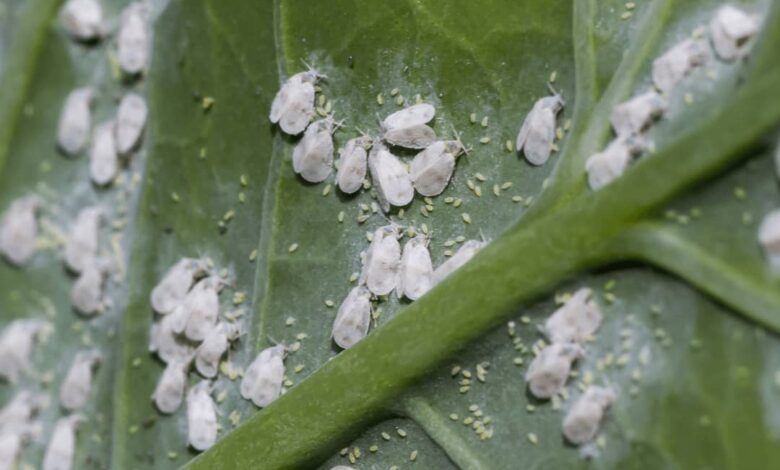KISORO, June 12, 2025 — Farmers in the hilly Kisoro district in southwestern Uganda are facing growing alarm following an invasion of strange whitefly-like pests that have ravaged crops in at least four sub-counties bordering Rwanda.
The affected subcounties of Nyarusiza, Muramba, Chahafi, and Chahi, are already showing signs of potential food shortages, with crops such as beans, Irish potatoes, sweet potatoes, cucumbers, and cassava left bare, their leaves entirely stripped.
Kisoro District LCV Chairperson, Abel Bizimana, said the pests, believed to be a type of whitefly, were first detected in Rwanda last year before spreading into Uganda.
“The first time these pests were seen was in Rwanda, around April to May last year, where gardens were destroyed. The authorities attempted to control the outbreak through spraying and community outreach,” he explained.
Kisoro District Production Officer, Richard Habomugisha, confirmed widespread damage across multiple villages, affecting both food crops and commercial farms.
“This invasion could push the district into a food crisis and undermine Kisoro’s agricultural productivity, as all major crops, including those intended for sale, are under threat,” he said.
Kisoro is Uganda’s leading producer of Irish potatoes, climbing beans, and cucumbers. The district also grows significant quantities of pumpkins, apples, cabbage, carrots, and plantain. The loss of these crops is expected to disrupt both local food availability and wider market supplies.
Habomugisha noted that infested plants typically display deformed leaves with a whitish undergrowth. In other cases, crops show classic signs of mosaic disease, pale yellow leaves, reduced leaf size, and stunted growth.
In some sub-counties, reports indicate crop yield losses of up to 80 per cent. A powdery residue left on the infected leaves is often blown by the wind, which farmers fear is facilitating further spread of the infestation.
The District Production Department has launched surveillance to assess the extent of the damage, determine which crops are most affected, and evaluate the severity of the infestation.
Extension workers have begun sensitising communities in Nyarusiza and Chahi, including farmers, local council leaders, and village chairpersons, on ways to limit the spread of the pest and trace its movements.
In the interim, the department has advised farmers to use a range of insecticides found to be effective, including 30ml of Dimethoate 50EC or Malathion concentrate mixed in 15 litres of water. While these treatments have shown success in killing the pests, they have not proven effective against the eggs left behind.
The district is also grappling with challenges such as limited expertise among extension workers in identifying the pest’s life cycle and lack of access among farmers to affordable chemical inputs.
As a result, the District Production Department has formally requested technical support from the Ministry of Agriculture, Animal Industry and Fisheries. The aim is to equip extension workers and farmers with the necessary knowledge and tools to manage the outbreak effectively, recommend the most suitable pesticides, ensure safe handling, and prevent the spread of the pests to neighbouring areas.
Buy your copy of thecooperator magazine from one of our country- wide vending points or an e-copy on emag.thecooperator.news
